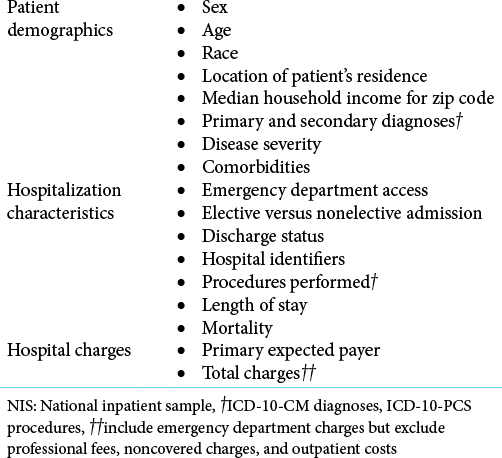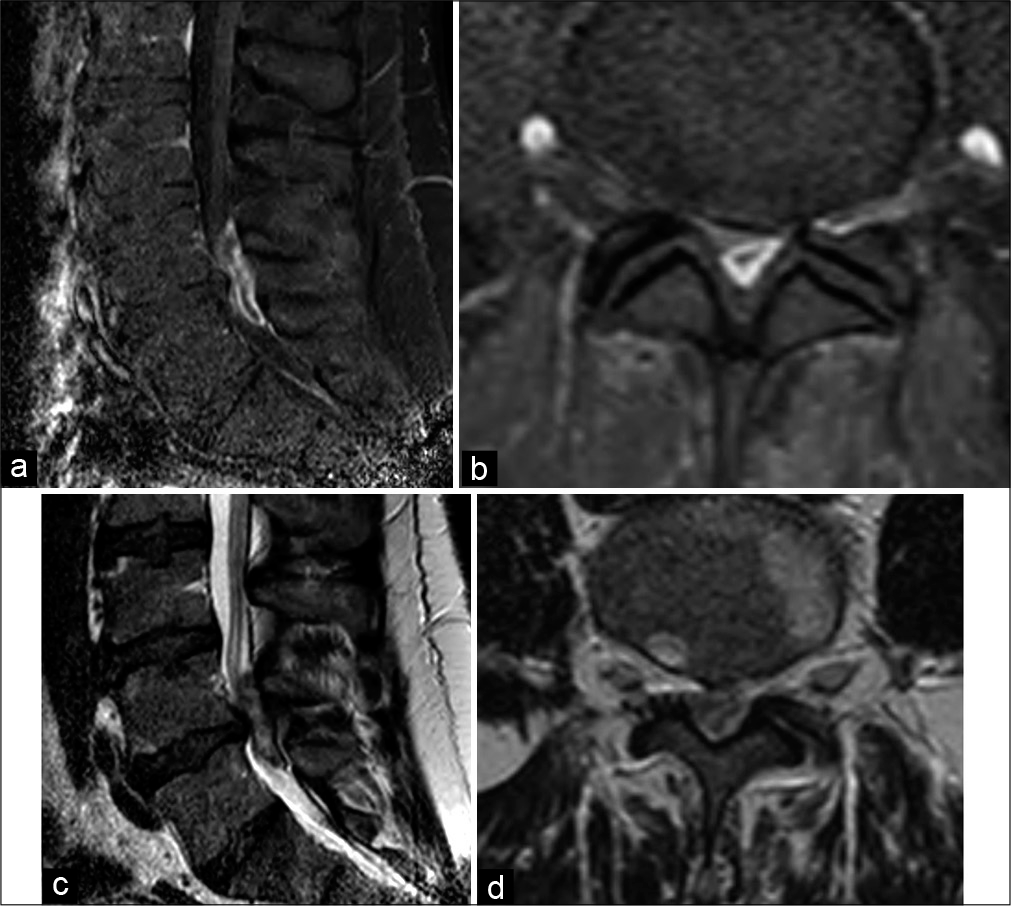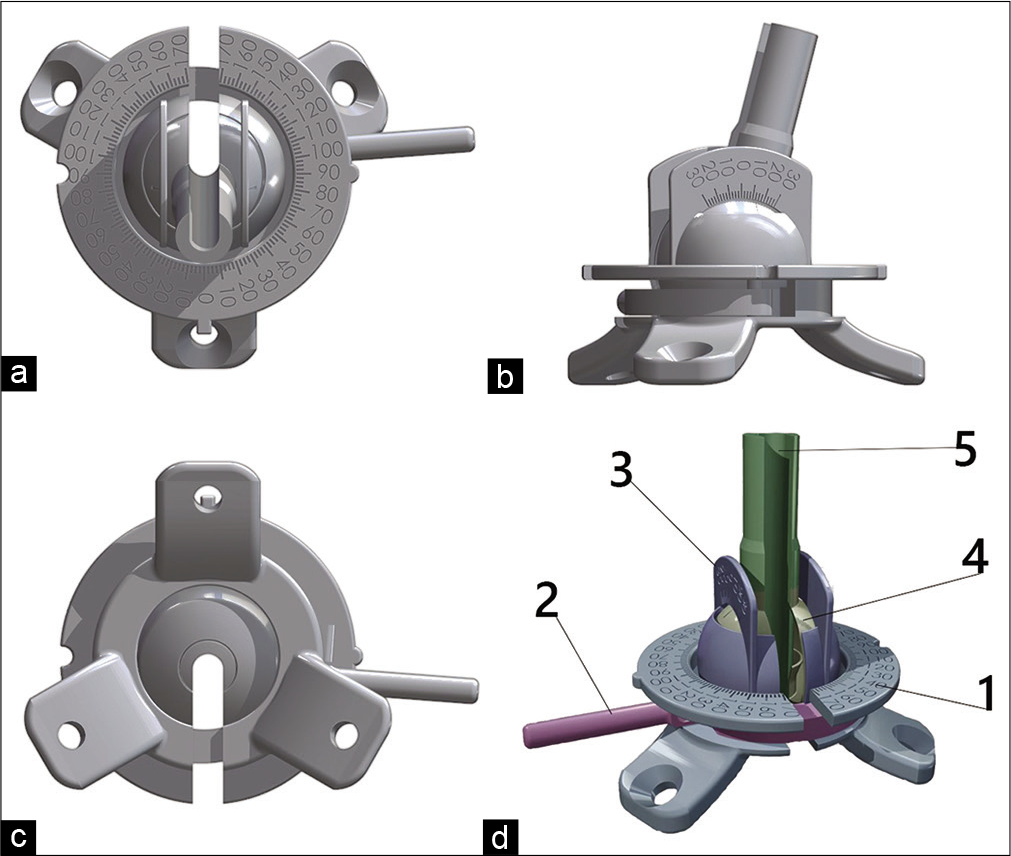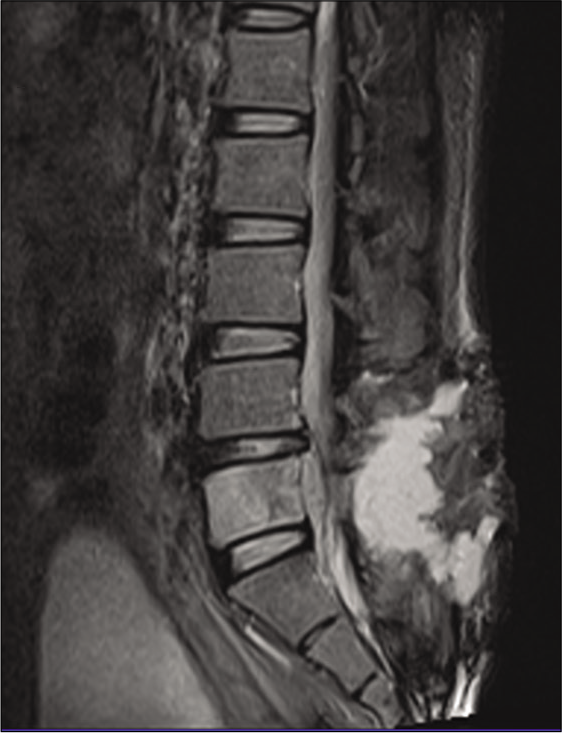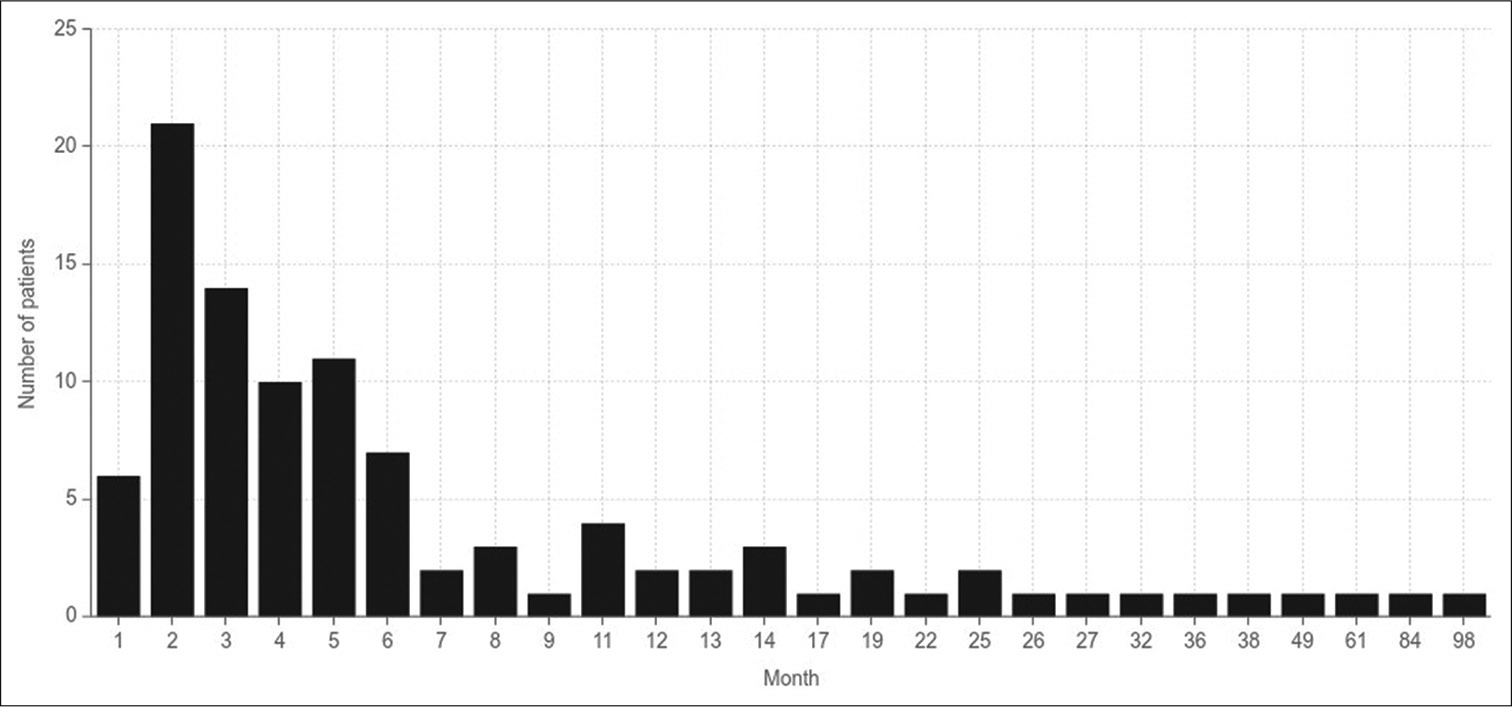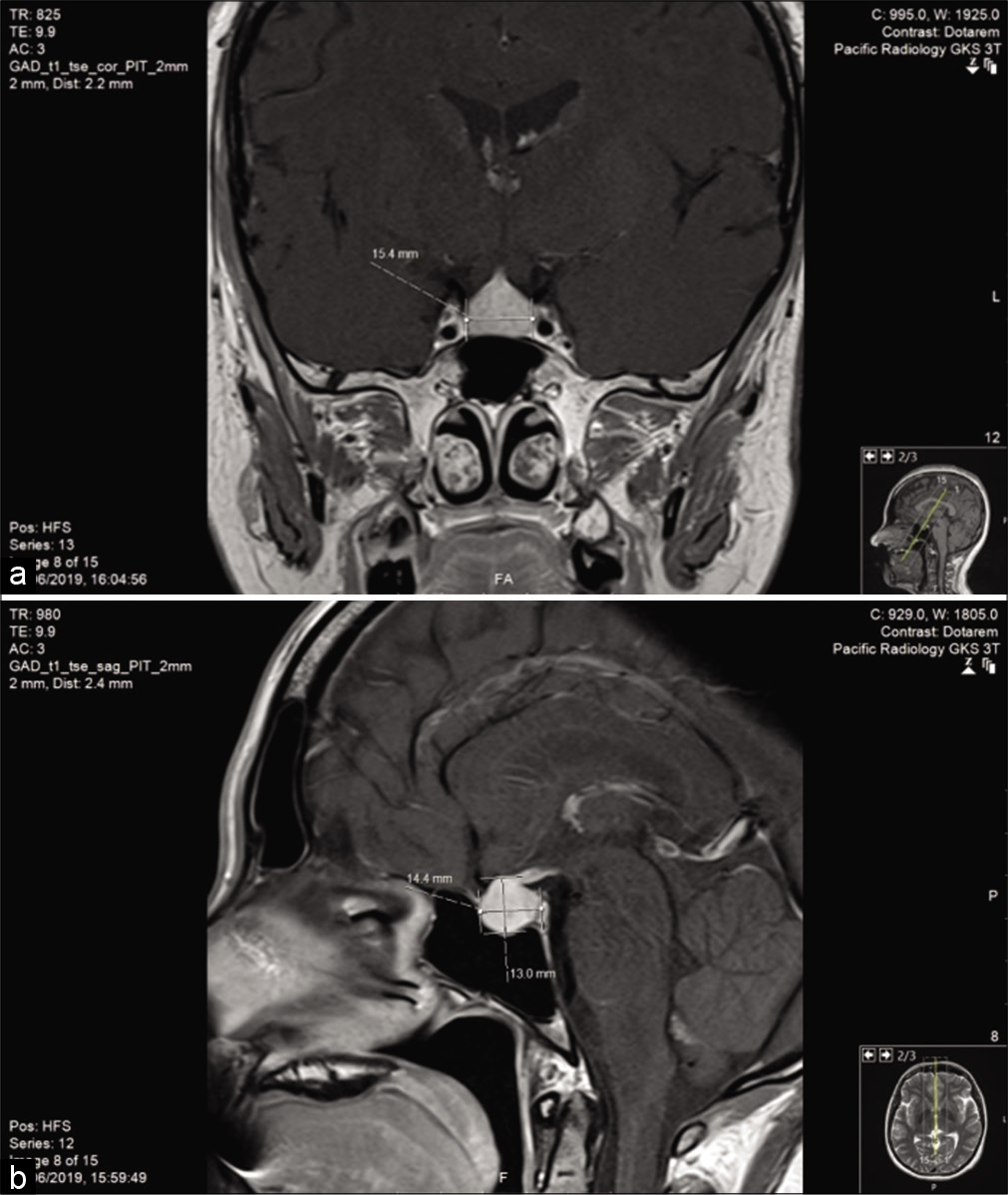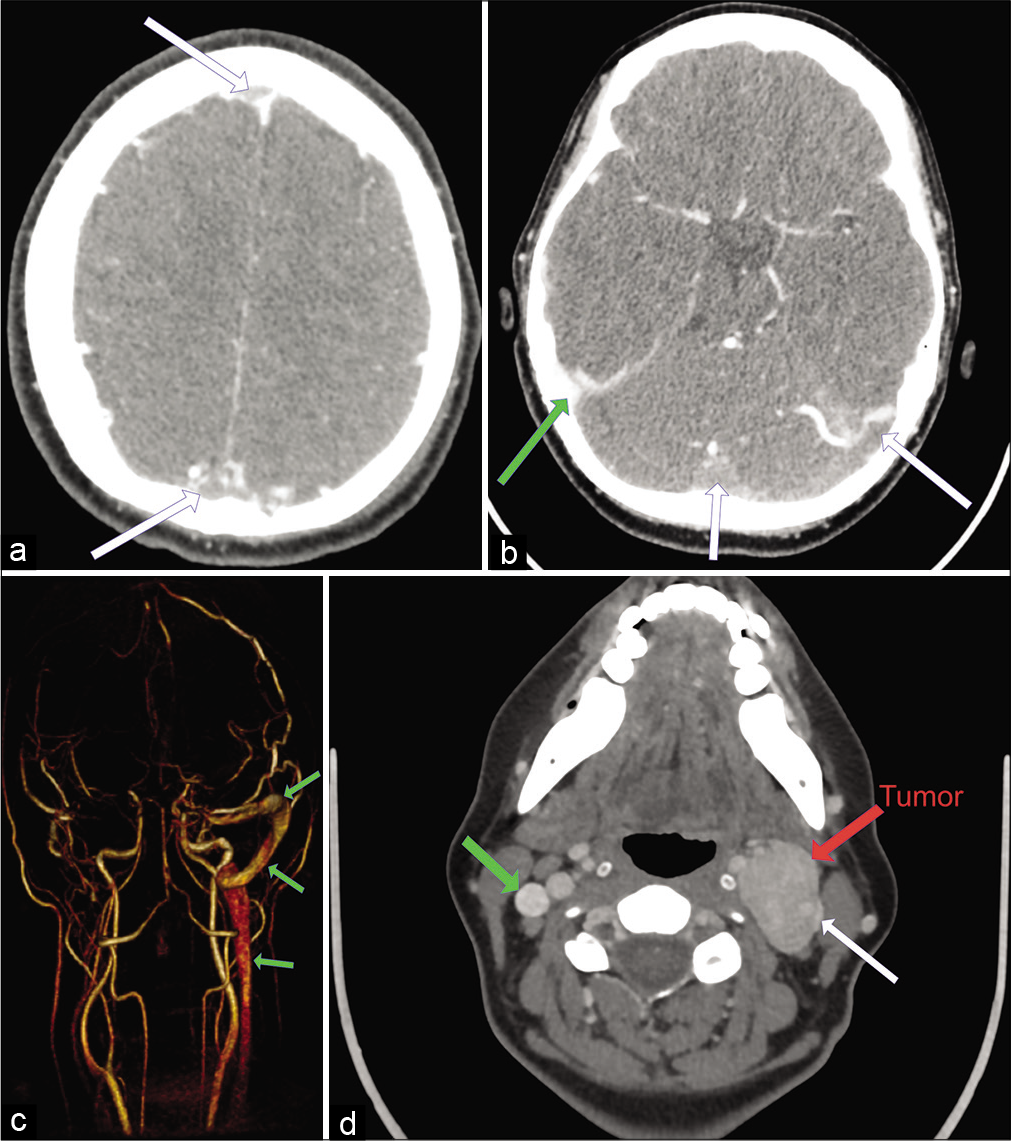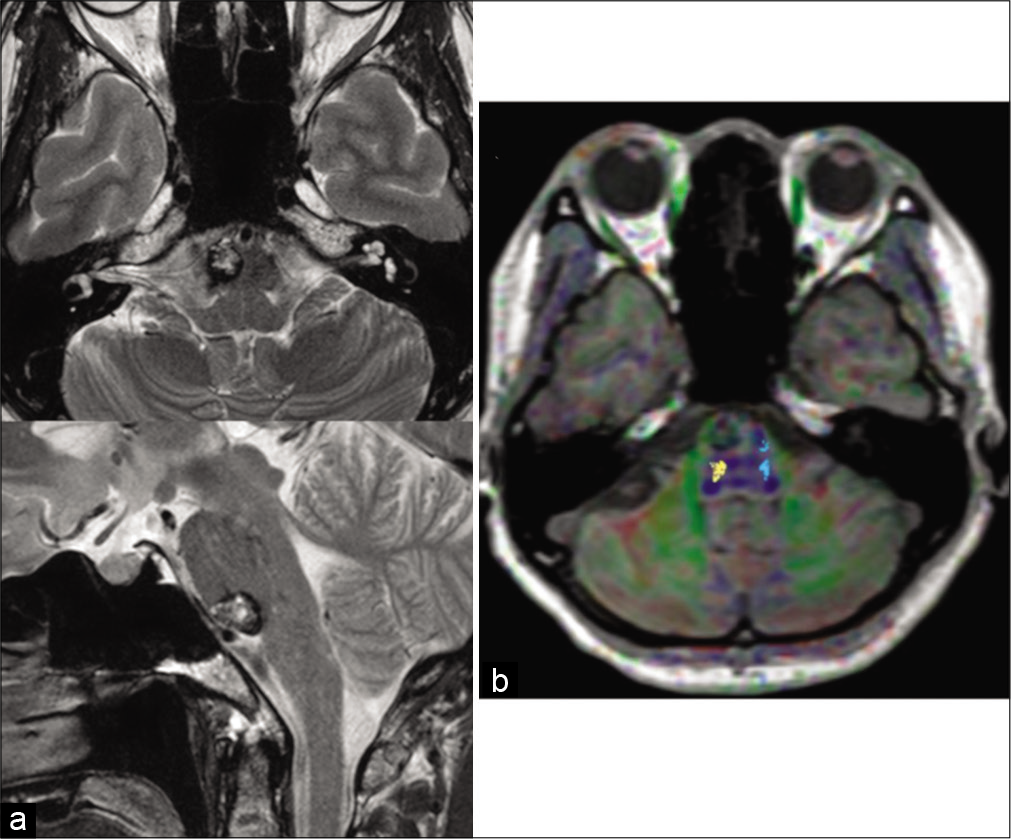Effect of comorbidities on ischemic stroke mortality: An analysis of the National Inpatient Sample (NIS) Database
Date of publication: 07-Jun-2021
Background: Stroke risk has been attributed to many pathological and behavioral conditions. Various modifiable and non-modifiable risk factors have been recognized and found consistent throughout epidemiological studies. Herein, we investigate the effect of comorbidities seen with patient’s suffering from ischemic stroke and its effect on in-hospital mortality.
Difficulty differentiating between a posterior extradural lumbar tumor versus sequestered disc even with gadolinum-enhanced MRI
Date of publication: 07-Jun-2021
Background: Differentiating between posterior extradural tumors versus sequestered lumbar disc herniations may be difficult even utilizing contrast-enhanced MR scans.
Neuronavigation device for stereotaxic external ventricular drainage insertion
Date of publication: 07-Jun-2021
Background: The insertion of an external ventricular drainage (EVD) is one of the most frequently used neurosurgical procedures. It is performed to adjust intracranial hypertension in cases of severe craniocerebral injury, acute posthemorrhagic hydrocephalus, meningitis, and oncological diseases related to impaired circulation of cerebrospinal fluid circulation (CSF).
A case of postoperative tubercular spondylitis following microdiscectomy for lumbar disc herniation
Date of publication: 07-Jun-2021
Background: Postoperative infections are one of the most common complications of spine surgery. However, following a lumbar microdiscectomy, a postoperative infection involving Mycobacterium tuberculosis (MTB) is extremely rare.
Effect of cranioplasty timing on the functional neurological outcome and postoperative complications
Date of publication: 07-Jun-2021
Background: The optimal timing for performing cranioplasty and its effect on functional outcome remains debatable. Multiple confounding factors may come into role; including the material used, surgical technique, cognitive assessment tools, and the overall complications. The aim of this study is to assess the neurological outcome and postoperative complications in patients who underwent early versus late cranioplasty.
A case report of lymphocytic hypophysitis
Date of publication: 07-Jun-2021
Background: Lymphocytic hypophysitis (LH) is a rare condition that mostly affects women of the reproductive age. Because it is infrequently encountered, it is not often considered as a differential diagnosis of sellar masses. The diagnosis is made clinically with the aid of magnetic resonance imaging (MRI) and should be considered if the patient has endocrine derangements in addition to a sellar mass.
A rare case of carotid body tumor associated with near complete cerebral sinus thrombosis and idiopathic intracranial hypertension. Management strategy and review of the literature
Date of publication: 07-Jun-2021
Background: Carotid body tumors (CBTs) are rare hypervascular lesions with critical location which makes them very challenging to treat. In rare occasions, compression of the jugular vein from the tumor mass could predispose to progressive thrombosis of intracranial venous sinuses. The latter consequently leads to intracranial hypertension (pseudotumor cerebri) with the accompanying danger to the vision. Herewith, we present our management strategy for this rare presentation of CBTs.
Anterior transpetrosal resection of the lower ventral pontine cavernous malformation: A technical case report with operative video
Date of publication: 07-Jun-2021
Background: Surgical treatment of pontine cavernous malformations (CMs) is challenging due to the anatomical difficulties and potential risks involved. We successfully applied an anterior transpetrosal approach (ATPA) to remove a lower ventral pontine CM, and herein we discuss the outline of our procedure accompanied by a surgical video.
Increase of the clivus-canal angle in patients with basilar invagination, without atlantoaxial displacement, treated with a simple maneuver of indirect decompression of the odontoid with the head clamp, during posterior occipitocervical arthrodesis
Date of publication: 07-Jun-2021
Background: Basilar invagination (BI) can be defined as the insinuation of the content of the craniovertebral junction through the foramen magnum toward the posterior fossa. BI is a prevalent condition in Northeast Brazil. The present study describes the changes in the clivus-canal angle (CCA) in the postoperative period in patients with symptomatic BI operated by a posterior approach, using a simple technique of indirect reduction of the odontoid associated with occipitocervical fixation.
Experiences of a neurosurgical center in the United Kingdom during the COVID-19 pandemic
Date of publication: 07-Jun-2021


